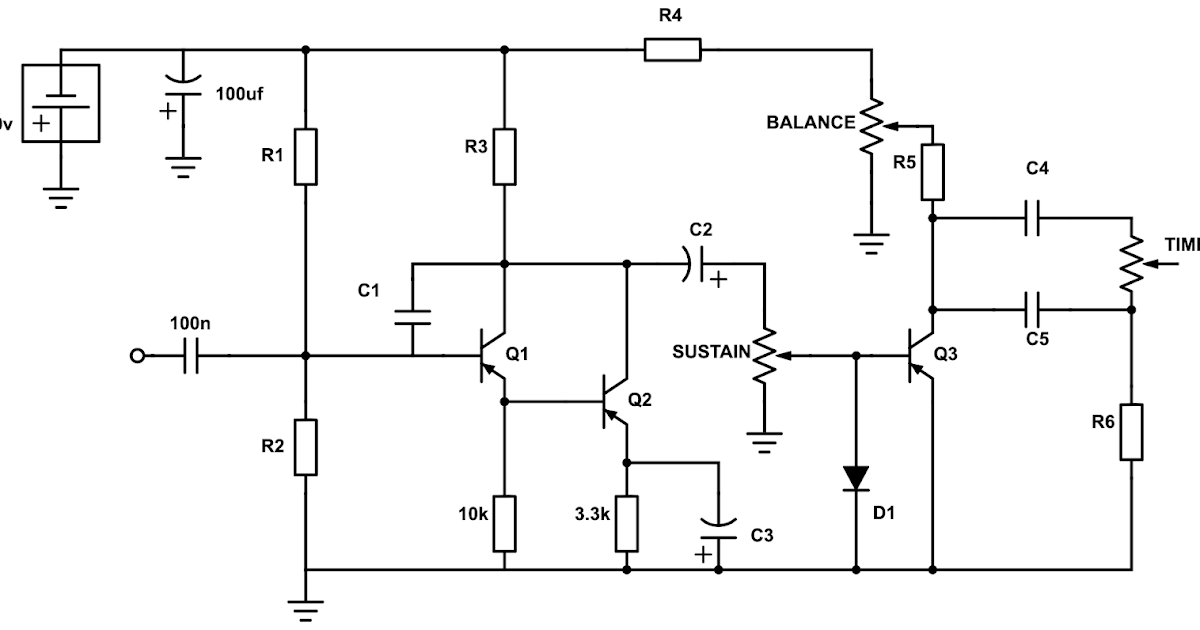peccary
Well-known member
First off: all credit for this goes to @music6000 , @thewintersoldier and everyone else who contributed to this build. You can see the original discussion here. All I did was follow their advice.
This mod allows you to use the Gnat Fuzz PCB to create an NPN Elka Dizzy Tone.
I wanted to share it here because it is a pretty simple mod to do with an existing PedalPCB board and because I didn't want to put this in the build reports because it isn't complete yet, but it does work! Credit to Music6000 for the build guide:

After building the board I then took TheWinterSoldier's advice regarding gain and leakage:
I am using MP38A transistors for this. For Q1 I used 58 hFE and .097 leak. Q2 70 hFE and .125 leak. Q3 100 hFE and .172 leak (measured on a Peak DCA75). I didn't have any lower hFE with lower leakage for Q2 or else I would have tried those. I'm using an 1N34A diode, but plan on trying it out with some others that I have (GY 102 and D9V) to see how they sound, but I will have to wait until tomorrow until I can experiment more.
A quick gut shot. Watch out for flying saucers!

Here is a sound clip. This is playing bass. I'm sorry for the terrible playing and recording, but my daughter was here watching Sesame Street. The kiddo gets really upset when I play bass/guitar and she can't strum on the strings so I was having to make faces at her to keep her from getting wild. I'm also sorry that you've gotta stare at the back of my fat calf lol.
I am pretty stoked with how this sounds already, though I definitely want to experiment some more. I am not really finding anything that it is lacking. It is mean and aggressive and nasty and spitty and I really love it. I think that a little more grind in the mids would be good, but I am using flatwounds here, so I think that a string change would would do more to change the tone in that direction.
https://photos.app.goo.gl/FLvCc1DtvUuDhRTJA
This mod allows you to use the Gnat Fuzz PCB to create an NPN Elka Dizzy Tone.
I wanted to share it here because it is a pretty simple mod to do with an existing PedalPCB board and because I didn't want to put this in the build reports because it isn't complete yet, but it does work! Credit to Music6000 for the build guide:

After building the board I then took TheWinterSoldier's advice regarding gain and leakage:
The tonebender mk3 and all variants (buzzaround and dizzy tone) form a darlington pair in Q1 and Q2. You want lower gain and leakage. Something in the 50s and 60s gain wise and leakage under 100. The two multiply their gain and slam Q3 where the magic happens. Look for something between 70-110 hfe and leaks at least 150-200u. The leakage will help it bias properly.
I am using MP38A transistors for this. For Q1 I used 58 hFE and .097 leak. Q2 70 hFE and .125 leak. Q3 100 hFE and .172 leak (measured on a Peak DCA75). I didn't have any lower hFE with lower leakage for Q2 or else I would have tried those. I'm using an 1N34A diode, but plan on trying it out with some others that I have (GY 102 and D9V) to see how they sound, but I will have to wait until tomorrow until I can experiment more.
A quick gut shot. Watch out for flying saucers!

Here is a sound clip. This is playing bass. I'm sorry for the terrible playing and recording, but my daughter was here watching Sesame Street. The kiddo gets really upset when I play bass/guitar and she can't strum on the strings so I was having to make faces at her to keep her from getting wild. I'm also sorry that you've gotta stare at the back of my fat calf lol.
I am pretty stoked with how this sounds already, though I definitely want to experiment some more. I am not really finding anything that it is lacking. It is mean and aggressive and nasty and spitty and I really love it. I think that a little more grind in the mids would be good, but I am using flatwounds here, so I think that a string change would would do more to change the tone in that direction.
https://photos.app.goo.gl/FLvCc1DtvUuDhRTJA
Last edited:

